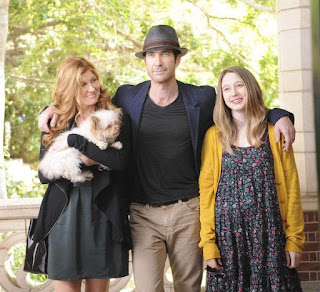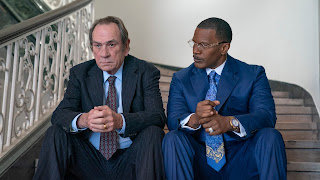From "Glee" to "Horror"

So, on Oct. 5 the creators of "Glee" offered a new show, "American Horror Story." I didn't know much about it, but I thought I would like it for a couple reasons. First, it was from the creators of "Glee," which was really fun in its first season and has shown flashes of it since. And 2, because it stars Connie Britton, who I loved on five years of "Friday Night Lights."
What I've gotten through two episodes simply defies expectations, and I'm not sure what to think. The pilot episode was about what I would imagine a bad drug trip would be like. Lot's of strange imagery, a sense of paranoia, and kind of a sick feeling in the bottom of my stomach. I didn't like it. I didn't hate it. I simply didn't know what to make of it.
When a show features an actress from a beloved family show and is marketed as coming from the creators of a show called "Glee," you're expecting it to be entertaining and maybe a little joyous. This isn't. Not in any way. In fact, it was almost impossible to tell from the pilot episode what the point of the show was, what it would be about, and how it would work over the course of a season, let alone longer.
I have always enjoyed and been fascinated with the horror genre, but it's fair to say that in recent years the cinematic formula used for those movies has gotten unbalanced. Depictions of graphic violence and degradation have replaced suspense. Most of these new wave slasher films aren't scary so much as they are disgusting.
In that sense, "American Horror Story" is a welcome change. It appears to have been heavily influenced by the horror films of the 1970s and early 1980s, a time when creepy visages and suspenseful storytelling were a big part of the narrative process. There is something psychologically chilling about this show, and the fact that it's on TV — even on a cable network like FX — forces a little more restraint than the average Hollywood studio seems capable of.
The second episode also added a little more structure. It added a little more backstory, a little more narrative construct, and set the stage a bit more for how this show will play out. The basic theory seeming to be that the house itself is evil.
Of course this is a common subplot in the horror genre — places or objects are evil, leading to the evil deeds that occur there. Of course, as Christians, we recognize the fallacy in this line of thinking. Places aren't evil, people are evil. It would be easier to think a thing or a place was responsible for evil deeds, then we wouldn't have to take responsibility for our actions, but that simply isn't the case.
Still, that logical fallacy aside, it will be interesting to see how this show develops and how they can possibly sustain this storytelling structure over the course of a season, even an abbreviated cable season.



Comments
Post a Comment